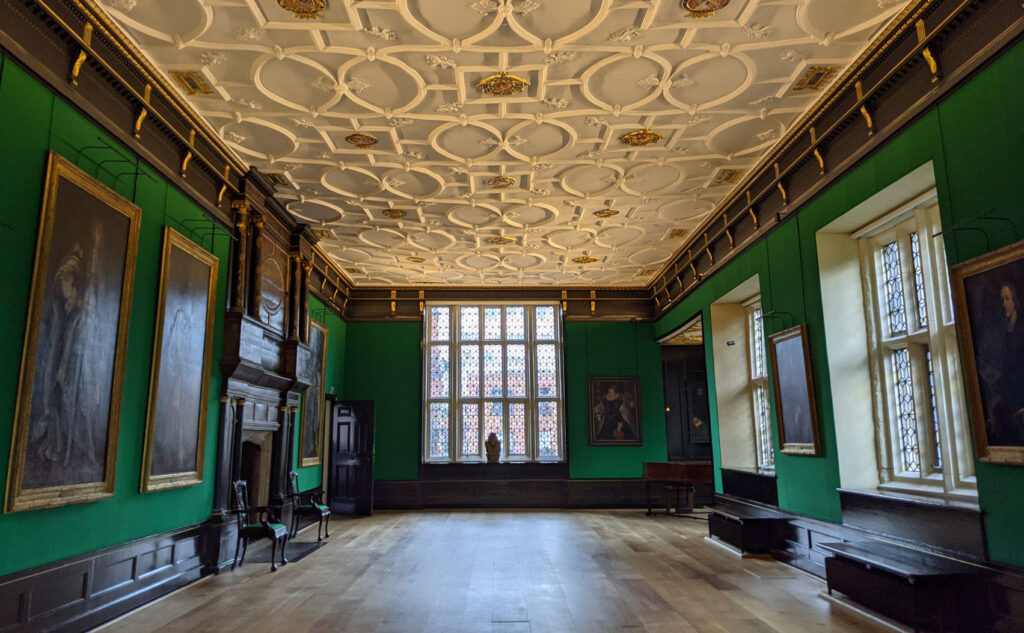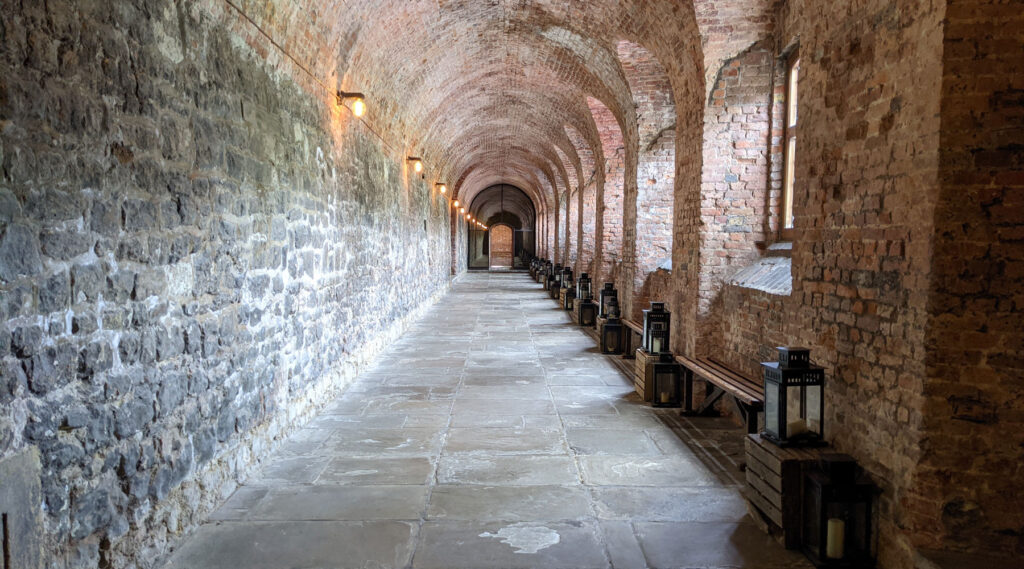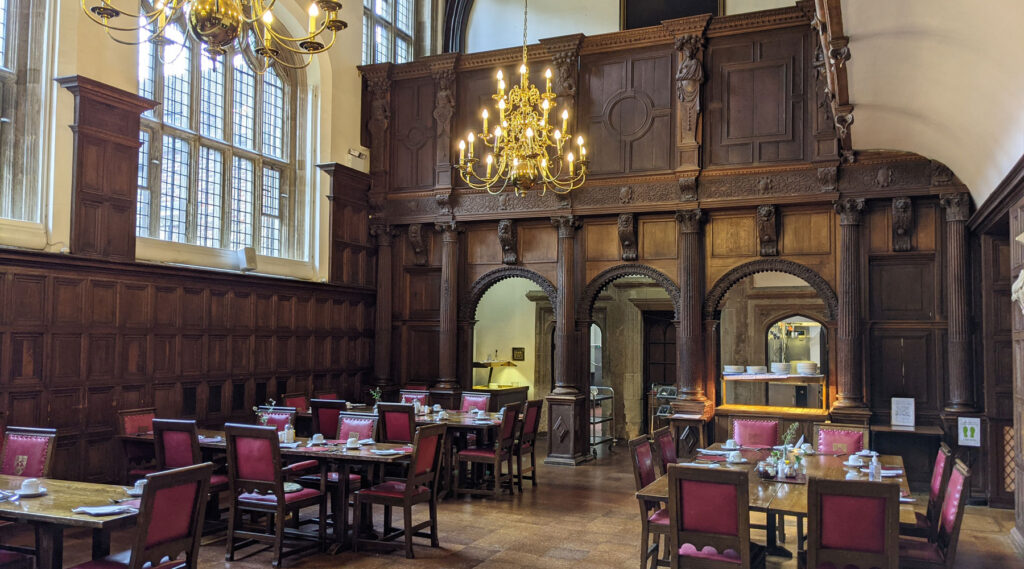Just around the corner from the brutalist Barbican estate can be found a medieval monastery, with a recently restored Great Chamber that you can now visit.
The Charterhouse has long been hidden from the outside world by a high wall, but a few years ago, the people who still live there started offering tours, and then a museum was opened, and now the tours are a regular event.
Apart from the cluster of stone houses and gardens to visit, there is also the Great Chamber — originally built by Edward North in the 1540s, and referred to as the “Throne Room” after both Elizabeth I and James I held their Privy Councils there before entering London to be crowned.
Sadly the site was hit by a bomb during WW2, and much of the interior decoration was gutted by fire, and later rebuilt by the architects John Seely and Paul Paget. While they did a lot to uncover long lost aspects of the Charterhouse, arguably some of the things they did would not be permitted today.
For example, the Great Chamber used to be two rooms — the main room, and a smaller room which was probably a waiting area. The post-WW2 architects decided not to restore the burnt down wall, and also extended the plaster ceiling decoration so that there’s no visible trace that this was once two rooms.
Deciding not to restore the wall is probably a good thing, as it makes the hall much more useful as a larger space, even though I personally would have liked a thin break line running around the room where the wall used to be to remind us of the layers of history in the building. But that’s not was how they did things 70 years ago.
They also added gilt to the ceiling embossing which more recent research has shown wasn’t there originally, and in what can be best described as a choice of the 1950s, painted the walls in a rather drab tan colour and covered them with faded tapestries. The overall effect was very yellow.
It’s now been given a dramatic revamp.
Over the past year, the tapestries were removed to be conserved, while the ceiling was renovated to a style closer to how it would have been originally, with less gilt on the embossing, and more on the shields. The less said about the brass chandelier the better I think.
And the tan coloured walls have been replaced with a deep rich green that really shows off the paintings they’ve now decorated the room with.
It’s not an authentic restoration of the room, as it’s had so many different uses over the centuries that there’s no one point in history that is more correct than any other, and also if they wanted to, for example, go Tudor, all the wood panelling would have to be made as modern cladding, so they’ve gone for a refreshing of the space rather than a historic restoration.
The room feels grander now with the darker walls, clever ceiling uplights and ornate paintings. As an eye-popping climax to a tour of the Charterhouse, it’s a wonderful way to finish.
The public tours take in the rest of the Charterhouse, including the Great Hall, now a dining hall for the Brothers who live there, the remains of the cloisters, the chapel and the old library.
The standard tours cost £15 per person and run on Tuesday, Wednesday and Friday – plus occasional Saturdays.
The tours can be booked here.
There are also regular tours of the gardens, and later this year they aim to run some evening tours as well.
Having only opened to the public recently, the Charterhouse can genuinely be described as one of London’s hidden gems that hardly anyone has seen before.













